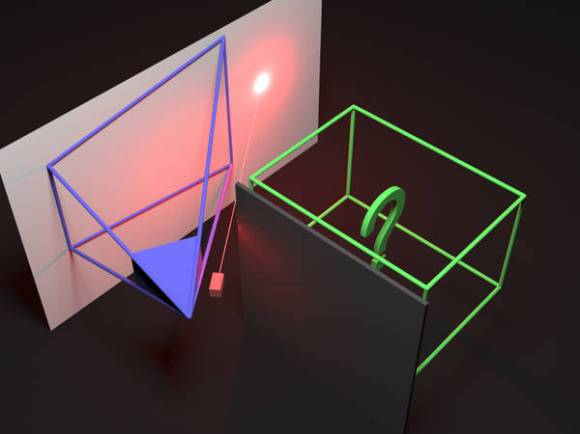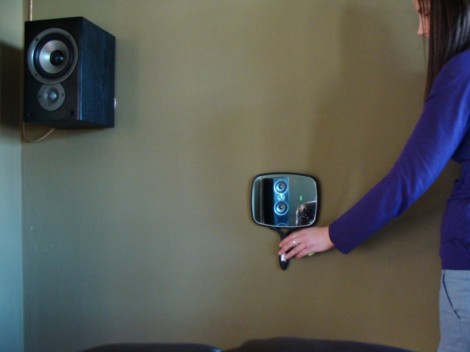[Matthias] recently published a paper he worked on, in which he details how his group managed to reconstruct a hidden scene using a wall as a mirror in a reasonably priced manner. A modified time-of-flight camera (PMD CamBoard Nano) was used to precisely know when short bursts of light were coming back to its sensor. In the picture shown above the blue represents the camera’s field of view. The green box is the 1.5m*1.5m*2.0m scene of interest and we’re quite sure you already know that the source of illumination, a laser, is shown in red.
As you can guess, the main challenge in this experience was to figure out where the three-times reflected light hitting camera was coming from. As the laser needed to be synchronized with the camera’s exposure cycle it is very interesting to note that part of the challenge was to crack the latter open to sniff the correct signals. Illumination conditions have limited impact on their achieved tolerance of +-15cm.












